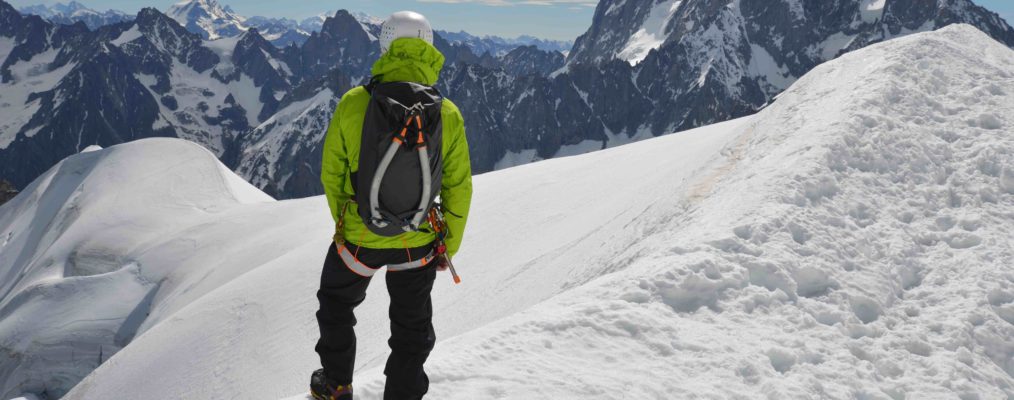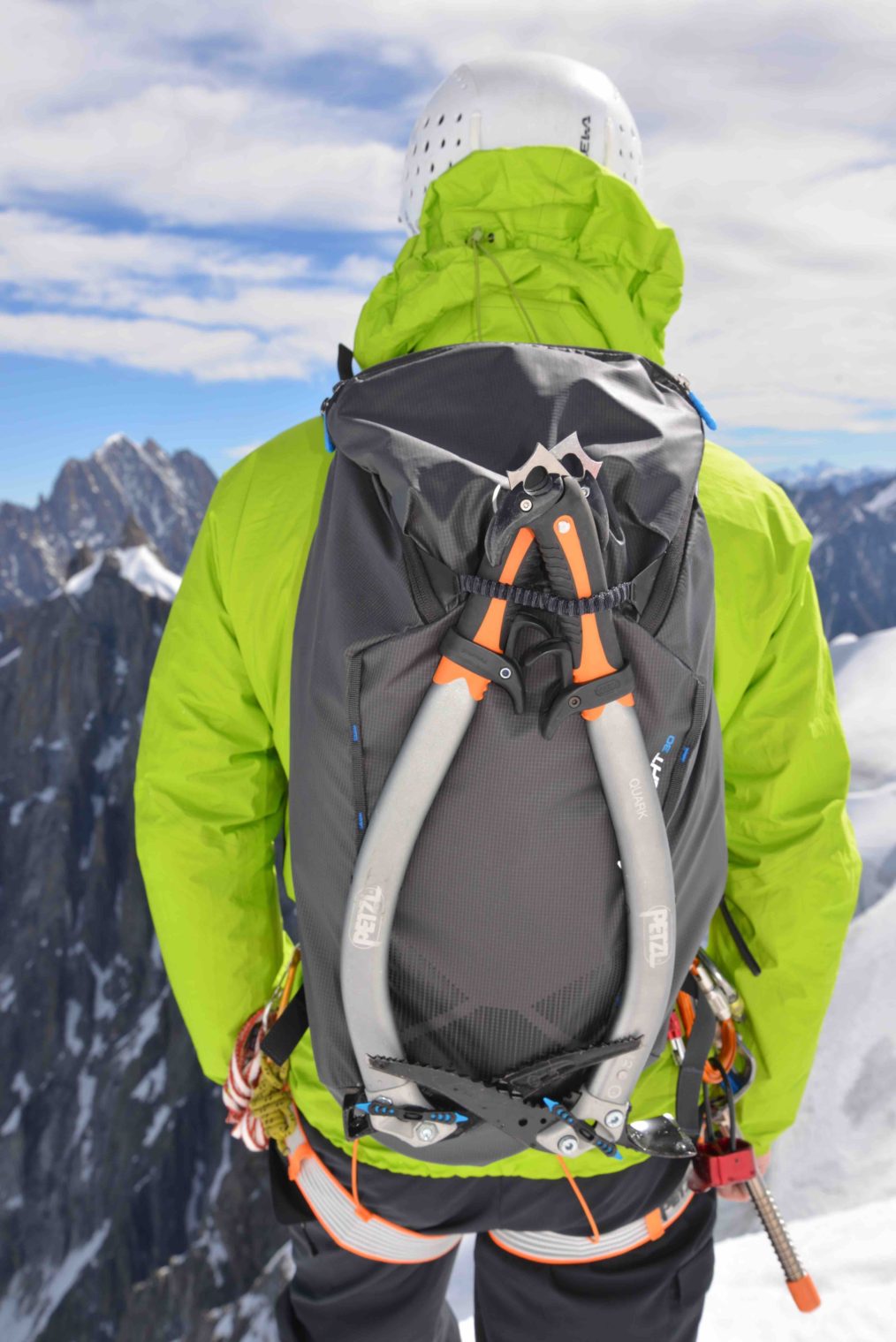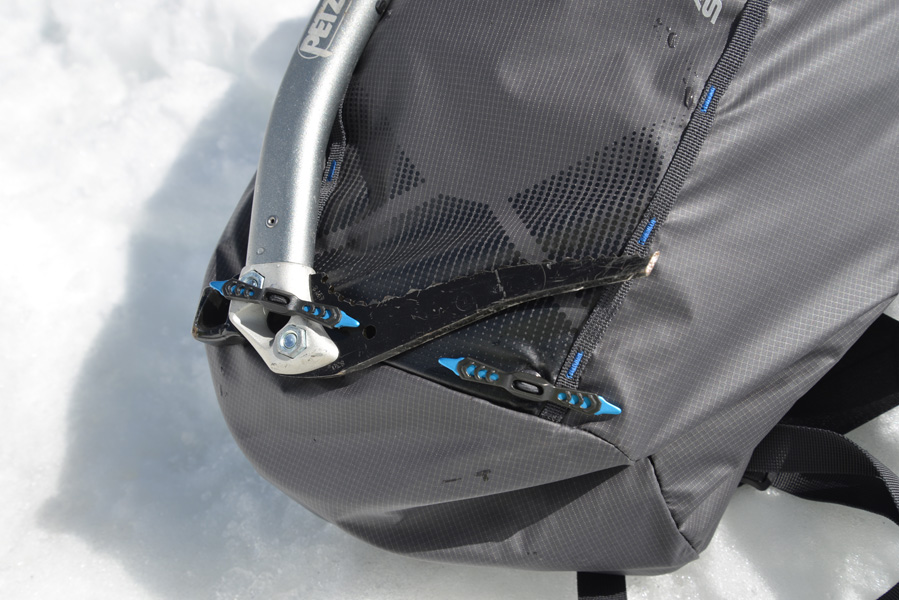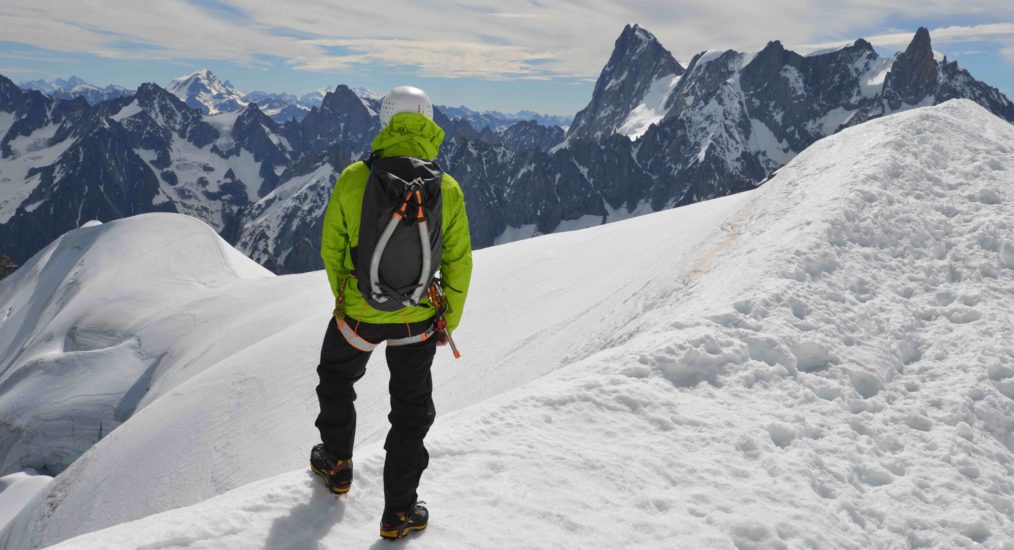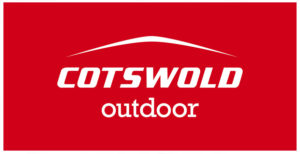Lowe Alpine are celebrating 50 years in the outdoor gear business in 2017, and to mark the occasion they have completely redesigned their mountain/climbing pack range, now named Ascent. Using lightweight materials and a clean design language, the range runs from the Mountain Ascent 40:50 – a generously-sized pack for winter or multi-day outings – to the Alpine Ascent packs – classic alpine packs with several options – to the Peak Ascent packs which offer great value, to the pinnacle of the range in terms of design and function, the Ascent Ultralight 30. With the Ultralight 30, Lowe Alpine’s designers have set out to create the ultimate daysack for alpine climbers, with the aims being to keep the weight as low as possible, the pack as simple as possible, yet offer all the functionality that alpinists are looking for. Have they succeeded? Let’s find out…
FEATURES
Weighing in at just over half a kilo, the Superlight 30 certainly lives up to its name, and must be one of the – if not the – lightest 30L alpine sacks on the market. Despite its diminutive weight however, the Superlight feels capable of taking the regular knocks and scrapes it will get on alpine routes, and that’s thanks to the use of two types of ripstop material featuring TriShield Superlight coating for increased durability and water resistance. The design is seriously sleek – a property coveted by alpinists aiming
for minimum faff in the mountains. The clean lines of the pack are achieved partly through the used of a zip opening rather than a traditional lid, and the lack of compression straps at the side. The opening retains both an internal and external zipped pocket, however, with a key clip on the inside.
The backsystem of the Ultralight 30 is very simple, just a foam pad inserted in a sleeve in the inside of the pack to give some rigidity and padding when wearing the pack. This pad is dual-purpose and can be removed and unfolded to provide a basic bivi mat for overnight missions. Moving to the outside, and the pack has a Dynamic Action Harness, which is basically contoured straps that angle away from the chest and under the arms, and use a slightly stretchy neoprene rather than foam padding. A basic waiststrap and chest strap complete the harness. On the front of the pack are a two sets of daisychains running top to bottom, and any gear you want to carry on the outside can be clipped to these. Rounding off the pack are the updated Headlocker ice axe attachments (more of which later) which are an improved version of those found in the previous generation of packs.
IN USE
Sometimes we come across a product that just feels ‘right’ from the moment we pick it up, and that was certainly the case with the Superlight 30. Despite its very low weight, it retains its shape even when half full, and combines a pureness of design with some very good features. The Headlocker attachments being a perfect example; quick and simple to use, this has to be the best solution yet for attaching ice axes to a pack. To use the Headlocker, you just pull and insert one of its ends into the hole its bungee cord comes out of. You then push the ice axe head through the Headlocker and pull and release to secure. Simple. The advantage of this over, say, a simple loop system is that it will secure technical tools that don’t have an adze or hammer. The handles of your axes are secured by the elasticated top retainer that feels more durable and secure than many others of this type.
The other element of the Superlight 30 we were pleasantly surprised by was the shoulder straps and harness system. The shape of the chest straps – cutting away under the armpits rather than carrying on in a vertical direction – means that they stay out of your way when climbing, and are no less comfortable for it either. The straps are lightweight and yet comfortable enough for the kind of weight you’ll be carrying on a typical alpine day out. The belt is very simple – just a thin webbing tape – yet it does its job of stabilising the load and can be removed entirely with very little effort, if required.
While the zip-entry lid precludes the ability to ‘over fill’ the pack –useful when carrying gear during the walk-in to a route that you will take out and use once climbing – it does allow easy access to the inside of the bag, and perhaps greater control in organising your kit. The volume is enough for a typical day out in the Alps, allowing the carrying of extra layers and food and drink, while items that can’t be fitted inside (such as a helmet) could be secured to the daisychains on the front of the pack. If climbing as a pair, this pack could be used by the leader, with a larger pack for sleeping gear carried by the second.
The only niggle we have encountered so far when using the Superlight is when carrying rope. While some other packs allow you to secure a rope underneath the lid, the Superlight secures the rope above the harness straps, and we found that this presses into the shoulders which can be a bit uncomfortable. It’s not a dealbreaker by any means, but certainly worth mentioning. Other than this, we found this pack a delight to use, and for anyone looking for a lightweight alpine sack the Superlight 30 absolutely must be on the shortlist.


